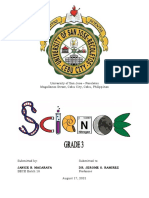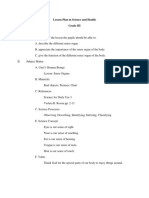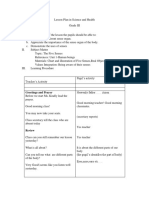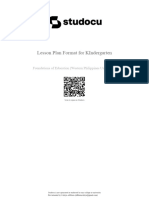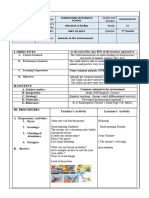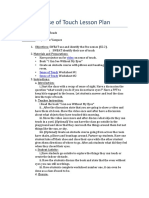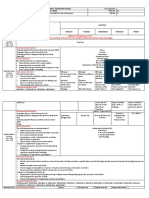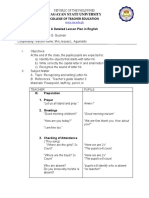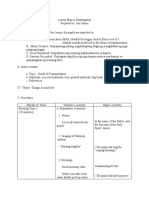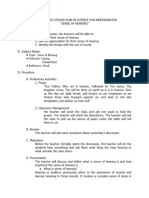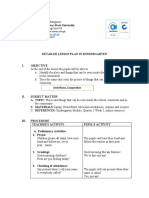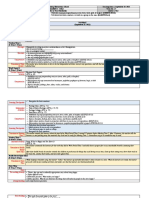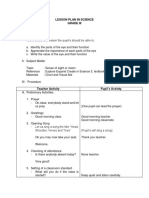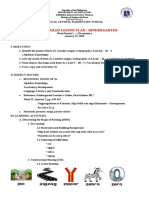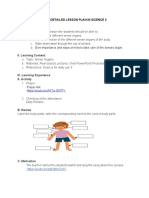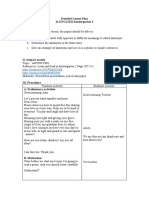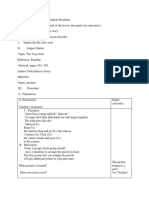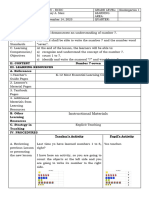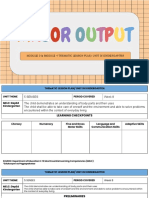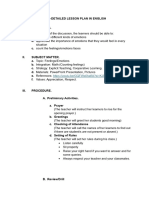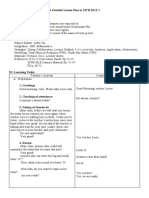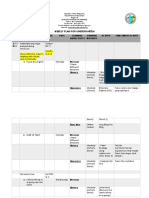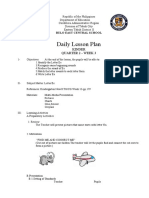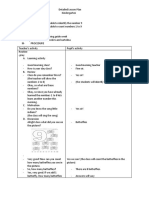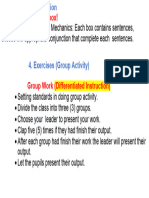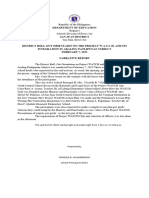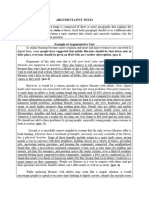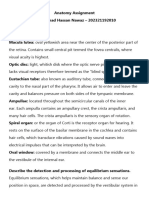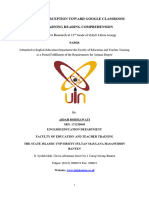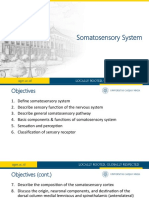Lesson Plan: Exploring the Five Senses
Grade Level
Kindergarten
Subject
Science
Learning Objectives
By the end of this lesson, students will be able to:
• Identify and name the five senses (sight, hearing, taste, smell, touch).
• Understand the basic functions of each sense.
• Apply their understanding of the five senses to their daily lives.
• Demonstrate an understanding of inclusive practices by working collaboratively and respecting
the abilities and perspectives of their peers.
Materials Needed
• Picture cards representing each of the five senses
• Objects or materials to stimulate each sense (e.g., a bell for hearing, a cotton ball for touch, a
lemon slice for taste, a flower for smell, a colorful picture for sight)
• Chart paper and markers
• Worksheets with illustrations of different sensory experiences
• Glue sticks
• Scissors
Introduction (10 minutes)
1. Gather the pupils in a circle and introduce the topic of the five senses.
2. Show the picture cards representing each sense and ask the pupils if they can identify them.
3. Discuss with the pupils what they already know about each sense and why they are important.
Inquiry-Based Activity (30 minutes)
1. Divide the pupils into small groups of 4-5.
2. Provide each group with a set of objects or materials related to one of the five senses.
3. Instruct the groups to explore the materials and discuss how they interact with their senses.
Encourage them to use descriptive words to explain their observations.
�4. Circulate among the groups to facilitate discussions and ask guiding questions to deepen their
understanding.
5. After sufficient exploration time, gather the pupils back together and invite each group to share
their findings with the whole class.
Whole-Class Discussion (15 minutes)
1. Use chart paper and markers to create a five-column chart with the headings "Sight," "Hearing,"
"Taste," "Smell," and "Touch."
2. Ask the pupils to contribute their observations from the inquiry-based activity and write them
under the corresponding sense column.
3. Encourage pupils to make connections between the senses and their daily lives. For example,
how do they use their senses when eating, playing, or exploring the outdoors?
Creative Activity (20 minutes)
1. Distribute the worksheets with illustrations of different sensory experiences to each pupil.
2. Instruct the pupils to cut out the pictures and sort them into the correct sense category.
3. Provide guidance and support to pupils who may need additional assistance.
4. Once pupils have sorted their pictures, have them glue them onto a separate piece of paper,
creating a visual representation of the five senses.
Assessment (5 minutes)
Review the chart created during the whole-class discussion and the pupils' creative activities.

